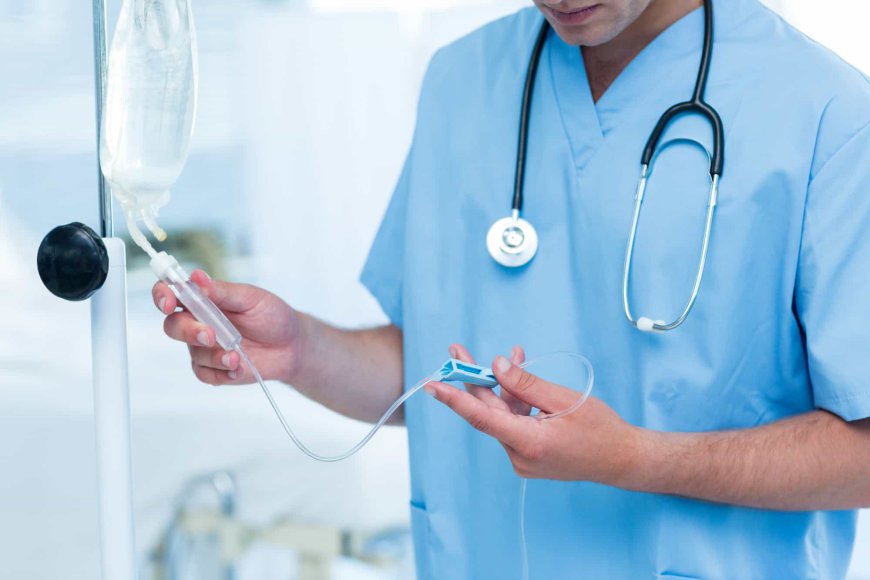Are There Risks with At-Home IV Drip in Dubai? Important Safety Tips

At-home IV drip treatments have grown in popularity, especially in Dubai, where people are always looking for ways to improve their health, hydration, and overall well-being. These treatments, which involve the infusion of fluids and nutrients directly into the bloodstream through an intravenous (IV) line, are often marketed as a quick solution for rehydration, boosting energy levels, and enhancing skin health. However, while the benefits of at-home IV drips are appealing, it’s important to consider the potential risks and follow essential safety precautions to ensure a safe experience.
Understanding At-Home IV Drips
IV Drip at home in Dubai typically involves a nurse or licensed medical professional administering an IV drip treatment in the comfort of your home. The drip can contain a variety of fluids, such as saline, vitamins, minerals, or electrolytes, depending on the individual’s needs. It’s often used for purposes like combatting dehydration, alleviating fatigue, or providing a boost to the immune system. While many people report feeling rejuvenated after an IV treatment, there are several risks associated with the procedure, especially if it’s not done properly or under the right conditions.
Common Risks Associated with At-Home IV Drips
-
Infection One of the most significant risks of at-home IV drips is the possibility of infection. Any time an IV needle is inserted into the skin, there is a risk of bacteria entering the body. If proper hygiene and sterile techniques are not followed, infections can occur at the injection site, or worse, enter the bloodstream, leading to conditions like sepsis.
-
Phlebitis and Blood Clots Phlebitis, which is inflammation of the vein, is another common issue. This can occur if the IV is not administered properly, or if the needle or catheter is left in the vein for too long. Phlebitis can lead to pain, swelling, and redness along the vein. In some cases, blood clots may form, posing further health risks.
-
Incorrect Dosage IV drips require careful calculation of the fluids and nutrients being infused into the body. If the wrong dosage is given, it could lead to complications such as electrolyte imbalances, which can cause symptoms like dizziness, nausea, muscle weakness, or even more severe health issues like cardiac arrhythmia.
-
Allergic Reactions Some individuals may have allergic reactions to certain substances used in the IV fluids. While rare, an allergic reaction can cause symptoms such as rash, swelling, difficulty breathing, or anaphylaxis in severe cases. It's essential to ensure that any allergies are disclosed before undergoing an IV treatment.
-
Vein Damage If the needle is inserted incorrectly or the catheter is left in the vein too long, it can cause damage to the veins, resulting in scarring or tissue damage. In severe cases, this could lead to chronic vein problems.
Essential Safety Tips for At-Home IV Drips
While the risks mentioned above are real, they can be minimized by following these essential safety tips:
1. Choose a Qualified Professional
Always ensure that the IV treatment is being administered by a licensed medical professional. In Dubai, this means choosing a qualified nurse or doctor with proper training in IV therapy. Avoid opting for unlicensed or untrained individuals, as they may lack the necessary skills to administer the procedure safely.
2. Ensure Sterile Equipment
Sterility is crucial in preventing infections. The medical professional performing the procedure should use sterile needles, IV bags, and other equipment. Make sure that the IV bag and tubing are properly sealed and have not been tampered with.
3. Assess Your Health Status
Before opting for an at-home IV drip, consult with a healthcare professional to assess whether it’s the right treatment for you. Certain medical conditions, such as kidney disease, heart disease, or allergies, may prevent you from safely undergoing IV therapy.
4. Hydrate and Monitor Fluid Intake
If the purpose of the IV drip is hydration, it's important to ensure that you're not over-hydrating your body. An excessive amount of fluid can cause a condition called fluid overload, leading to issues such as swelling, shortness of breath, or high blood pressure. A healthcare professional can guide the appropriate amount of fluid based on your individual needs.
5. Watch for Signs of Complications
During and after the IV treatment, monitor the injection site for any unusual signs, such as redness, swelling, or excessive pain. If you experience any discomfort, dizziness, or difficulty breathing, contact a medical professional immediately. Prompt action can help prevent serious complications.
6. Follow Aftercare Instructions
After an IV drip, it’s important to follow the aftercare instructions provided by the healthcare professional. This may include recommendations for hydration, rest, and avoiding strenuous activity for a certain period.
Conclusion
At-home IV drip therapy in Dubai can offer various benefits, including improved hydration and an energy boost. However, it’s crucial to recognize the risks associated with this treatment and take necessary precautions to ensure a safe experience. By selecting a qualified healthcare professional, ensuring proper sterile techniques, and following aftercare guidelines, you can minimize the risks and enjoy the potential benefits of at-home IV drips safely. Always consult with a healthcare provider before deciding whether this treatment is suitable for your health needs.
Read more : IV Drip at home
